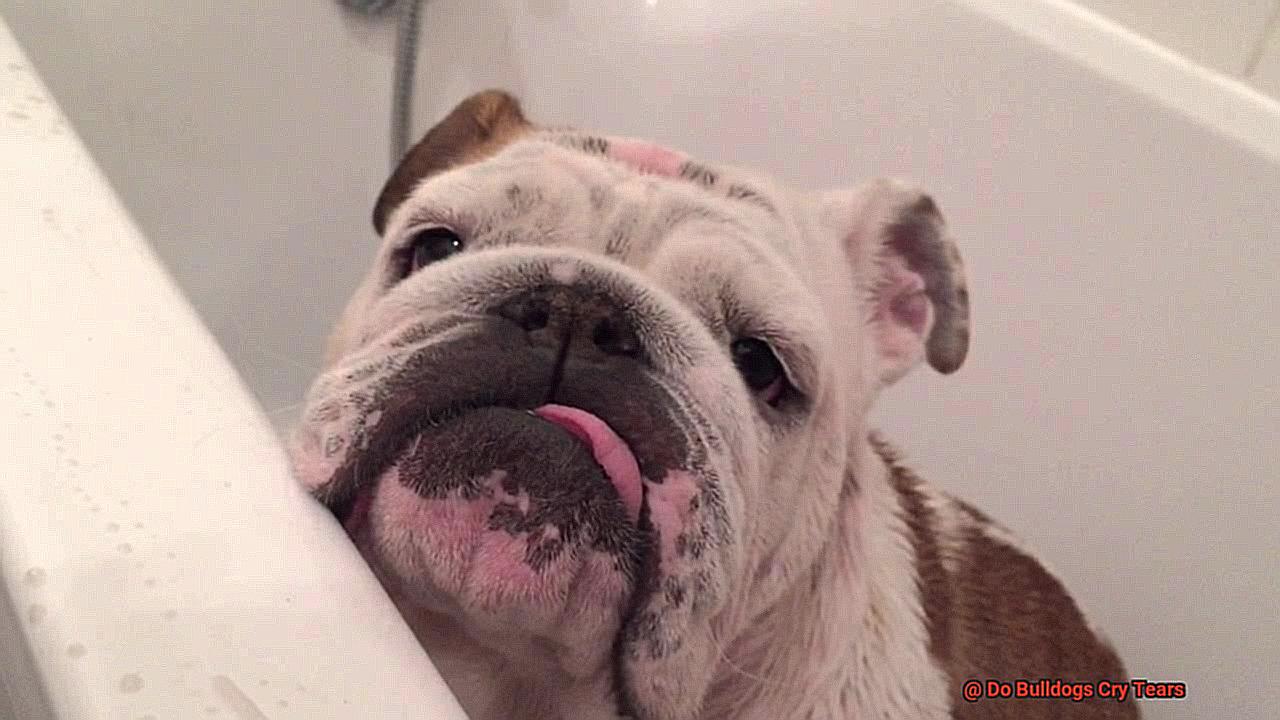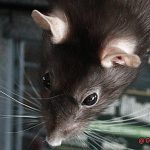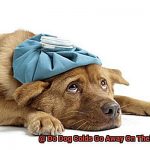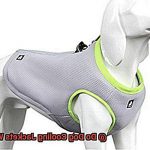Do Bulldogs Cry Tears?
Bulldogs – those lovable, squishy-faced companions who never fail to steal our hearts with their enchanting expressions. One look into those soulful eyes, and you might find yourself wondering: do Bulldogs shed real tears?
In this blog post, we’re diving deep into the fascinating world of Bulldogs to uncover the truth behind their tearful appearances. While it’s true that Bulldogs don’t cry like humans do when they’re feeling emotional, their teary expressions are not to be dismissed as mere coincidence. There’s a whole lot more going on behind those wrinkly faces than meets the eye.
So grab a cup of coffee (or tea, if that’s your thing), get cozy, and join us on this captivating journey as we unravel the mysteries of why Bulldogs seem to cry. We’ll explore the unique biological and anatomical factors that set them apart from other dog breeds and give rise to those adorable teary-eyed looks.
But wait, there’s more. Along the way, we’ll also share some invaluable tips on how to properly care for and maintain those expressive Bulldog faces. Whether you’re a devoted Bulldog owner or just someone who can’t resist their charm, this blog post is sure to leave you with a newfound appreciation for these tearful yet endearing creatures.
So let’s wipe away any doubts or misconceptions and embark on this adventure together – because understanding why Bulldogs appear to cry is just one step closer to truly understanding these incredible companions. Let’s dive in.
What Causes Excessive Tearing in Bulldogs?
Contents
- 1 What Causes Excessive Tearing in Bulldogs?
- 2 How to Monitor Your Bulldog’s Eye Health
- 3 Do Bulldogs Experience Emotions?
- 4 Cleaning Tips for Preventing Tear Stains and Eye Infections
- 5 Specialized Products and Surgical Options to Manage Excessive Tearing
- 6 Potential Underlying Health Issues that Cause Excessive Tearing
- 6.1 Entropion: When Eyelids Roll Inward
- 6.2 Brachycephalic Syndrome: Breathing Troubles and Tear Flow
- 6.3 Eye Infections: Conjunctivitis and More
- 6.4 Dry Eye: Insufficient Tear Production
- 6.5 Allergies: Irritants Triggering Tear Production
- 6.6 Serious Health Issues: Glaucoma and Blocked Tear Ducts
- 6.7 Consulting with a Veterinarian:
- 6.8 General Care Tips:
- 7 How to Keep Your Bulldog’s Eyes Healthy
- 7.1 Unlike humans, Bulldogs do not cry tears in the same way. While they may produce some watery discharge from their eyes, it is not an emotional response or a form of crying. So why do Bulldogs have those watery eyes?
- 7.2 The excessive tearing in Bulldogs can be caused by various factors, including allergies, eye infections, blocked tear ducts, or eyelash abnormalities. If you notice that your Bulldog’s tears seem excessive or if there are signs of discomfort or infection, it is important to seek veterinary care.
- 7.3 In some cases, Bulldogs may require additional interventions to manage excessive tearing. This can include using specialized products like tear stain removers or considering surgical options such as eyelid correction surgery to improve tear drainage.
- 8 The Importance of Consulting a Veterinarian for Eye-Related Issues
- 9 Conclusion
Bulldogs are beloved pets known for their wrinkled faces and adorable expressions. But have you ever wondered if Bulldogs cry tears like humans do? In this article, we will explore the fascinating world of Bulldogs’ eyes and understand the causes of excessive tearing in these lovable companions.
Understanding Bulldogs’ Unique Anatomy:
Contrary to popular belief, Bulldogs do not shed emotional tears like humans. However, they can experience excessive tearing, which may resemble crying. This is due to their distinct facial structure, with folds and creases that can trap moisture and bacteria, leading to irritation and tear staining.
Common Causes of Excessive Tearing in Bulldogs:
- Genetics: Bulldogs have a genetic predisposition to certain eye conditions like entropion (inward rolling of eyelids) and cherry eye (prolapsed tear gland). These conditions can cause constant irritation and result in excessive tearing.
- Shallow Eye Sockets: Bulldogs have shallow eye sockets, making their eyes more prone to dryness. To protect the eyes, the body produces excess tears, leading to watery discharge.
- Allergies: Bulldogs can develop allergies to various substances such as pollen or dust mites. These allergies can cause eye inflammation and irritation, resulting in excessive tearing.
- Tear Duct Blockage: Blocked or narrowed tear ducts prevent proper drainage of tears, leading to their accumulation and excessive tearing.
- Environmental Factors: Exposure to wind, dust, or pollutants can irritate a Bulldog’s eyes and trigger increased tear production.
Managing Excessive Tearing in Bulldogs:
- Regular Eye Care: Gently clean the area around your Bulldog’s eyes with a veterinarian-recommended cleanser and soft cloth to prevent tear stains and potential infections.
- Veterinary Consultation: If you notice persistent or excessive tearing, consult a veterinarian for a comprehensive eye examination. They can determine if there are underlying health issues contributing to the excessive tearing and recommend appropriate treatment.
- Surgical Options: In some cases, surgical interventions may be necessary to correct eyelid abnormalities or address tear duct blockage, improving tear drainage and reducing excessive tearing.
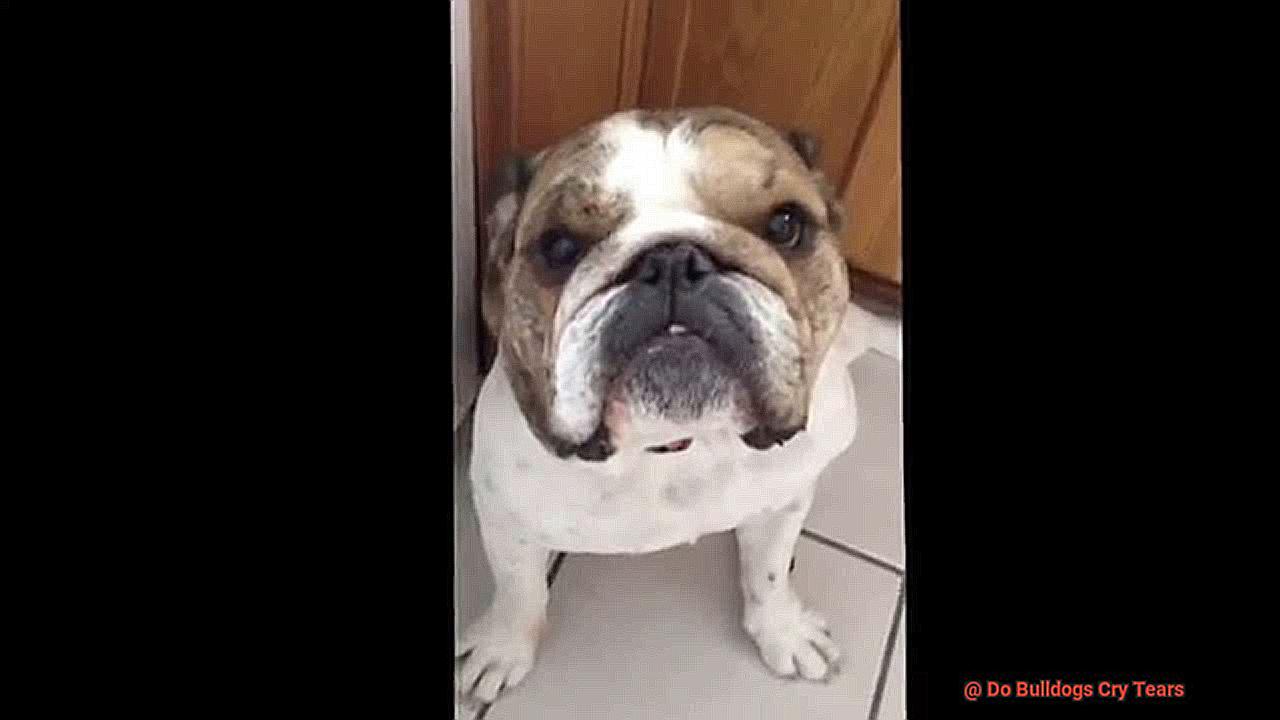
While Bulldogs do not cry tears in the emotional sense, they can experience excessive tearing due to their unique anatomy and various eye conditions. Regular eye care, veterinary consultations, and appropriate interventions can help manage excessive tearing in Bulldogs, ensuring their eye health and overall well-being. Remember, a happy Bulldog is a healthy Bulldog.
How to Monitor Your Bulldog’s Eye Health
One important aspect of their well-being is their eye health. Bulldogs are prone to certain eye conditions, so it’s crucial to monitor their eyes regularly. In this article, we will discuss how to keep a close eye on your bulldog’s peepers and catch any problems early.
Regular Visual Inspections:
Start by examining your bulldog’s eyes on a weekly basis. Look for any redness, swelling, discharge, or cloudiness. These signs could indicate an underlying issue that needs attention. Additionally, pay attention to any changes in your bulldog’s behavior, such as excessive blinking, rubbing their eyes, or avoiding bright lights.
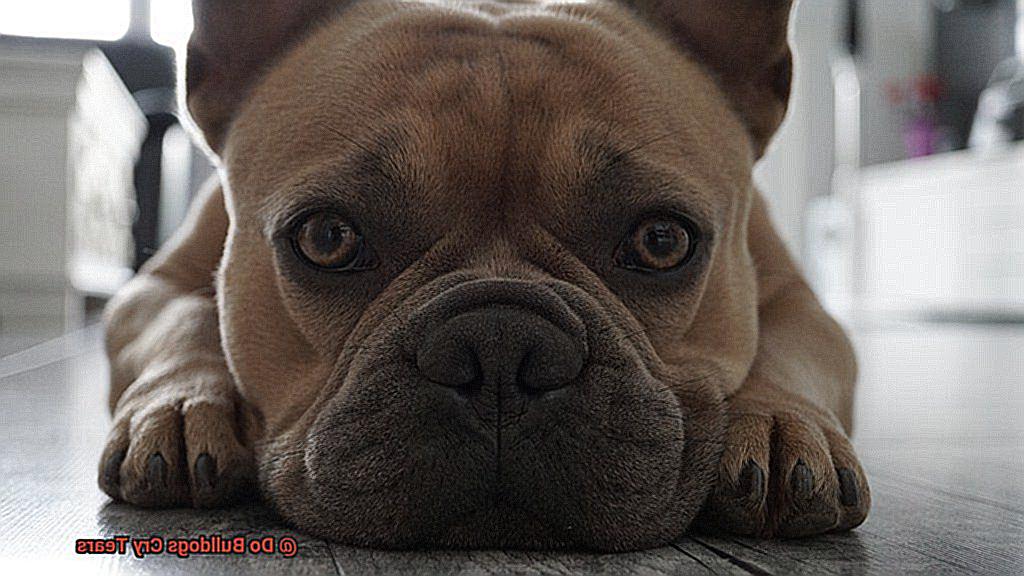
Veterinary Eye Exams:
In addition to visual inspections at home, consider scheduling routine eye exams for your bulldog with a veterinary ophthalmologist. These experts can perform thorough tests to assess your bulldog’s eye health and detect any potential problems that may not be visible to the naked eye. Regular check-ups are especially important if your bulldog has a history of eye issues.
Gentle Cleaning:
To keep your bulldog’s eyes clean and prevent any buildup of discharge or debris, gently wipe around the eyes using a damp cloth or specialized eye wipes recommended by your veterinarian. Avoid using harsh chemicals or irritants near the eyes, as this can cause further irritation or damage.
Protecting from Eye Injuries:
Bulldogs have prominent eyes that are more susceptible to injuries. To prevent accidents, avoid situations where your bulldog may be at risk of getting poked or scratched in the eye. Also, protect their eyes from harmful UV rays by ensuring they have access to shade when outdoors and consider using doggy goggles for added protection during sunny days.
Balanced Diet:
Proper nutrition plays a significant role in maintaining your bulldog’s overall eye health. Provide a balanced diet rich in essential vitamins and minerals that support eye function. Consult with your veterinarian to ensure you are feeding your bulldog a diet that meets their specific needs.
Prompt Treatment:
Lastly, if you notice any abnormal signs or symptoms, it is important to consult with a veterinarian as soon as possible. Prompt treatment and management can help prevent further complications and improve your bulldog’s quality of life.
Do Bulldogs Experience Emotions?
Bulldogs are not just adorable companions; they also have a wide range of emotions, just like humans. Understanding your bulldog’s emotions can help you better care for and bond with your furry friend. In this article, we’ll explore the various ways in which Bulldogs experience emotions.
- Happiness: Bulldogs are known for their joyful and playful nature. When your bulldog wags its tail, jumps around, and has a big smile on its face (yes, dogs can smile too.), it’s a clear sign of happiness.
- Fear and Anxiety: Bulldogs can experience fear and anxiety in certain situations. If your bulldog starts trembling, cowering, or hiding, it may be feeling scared or anxious. Common triggers for fear and anxiety in bulldogs include thunderstorms, loud noises, or unfamiliar environments.
- Love and Affection: Bulldogs are incredibly loyal and affectionate creatures. They form deep bonds with their owners and family members. If your bulldog follows you around, leans against you, or gives you gentle kisses, it’s showing its love and affection towards you.
- Empathy: Bulldogs are highly attuned to human emotions. They have the ability to sense when their owners are feeling down or upset. Your bulldog may offer comfort by snuggling up to you or simply being more attentive during these times.
- Frustration: Bulldogs, like any other dog breed, can experience frustration when they encounter obstacles or cannot achieve what they want. They may bark excessively, chew on furniture, or become restless as a way to express their frustration.
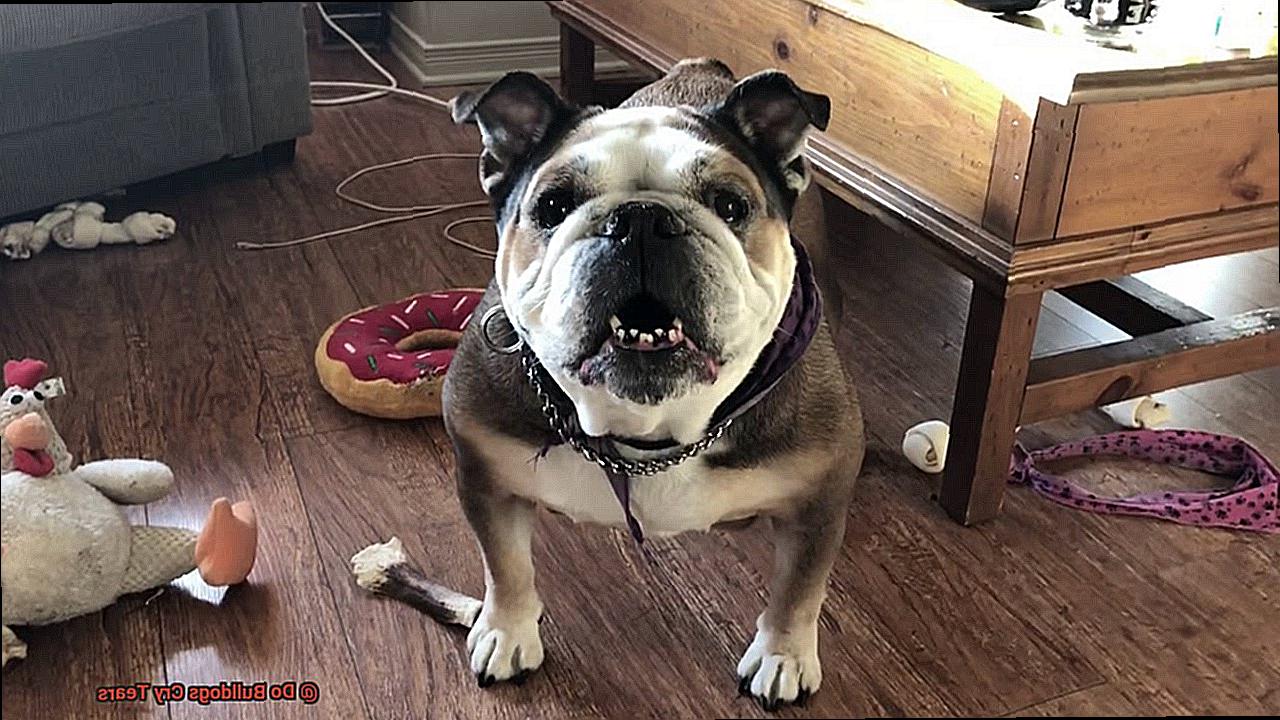
It’s important to note that while Bulldogs experience emotions similar to humans, they may not necessarily express them in the same way. Dogs have their own unique ways of communicating their feelings through body language and behavior.
To better understand your bulldog’s emotions, pay close attention to their body language. Notice how their tail is positioned, the expressions in their eyes, and the overall posture of their body. This will help you interpret their emotions more accurately.
Remember, Bulldogs thrive on love, affection, and positive reinforcement. Building a strong bond with your bulldog through regular exercise, playtime, and gentle training will contribute to their emotional well-being.
Cleaning Tips for Preventing Tear Stains and Eye Infections
French Bulldogs are adorable and lovable companions, but their prominent eyes can sometimes lead to tear stains and eye infections. As responsible pet owners, it’s essential to understand how to prevent these issues and keep our furry friends happy and healthy. In this article, we will explore some effective cleaning tips that can help you maintain your French Bulldog’s eye health and prevent tear stains from forming.
Regular Cleaning:
To prevent tear stains, it’s crucial to clean the area around your French Bulldog’s eyes regularly. Use a mild, tear-free dog-specific eye cleanser or saline solution recommended by your veterinarian. Gently wipe the area with a soft cloth or cotton pad soaked in the cleanser, being careful not to touch or irritate the eyes themselves.
Keep It Dry:
After cleaning, make sure to dry the area thoroughly. Excess moisture can create an environment for bacteria and yeast to thrive, leading to eye infections. Use a separate dry cloth or paper towel to gently pat the area dry.
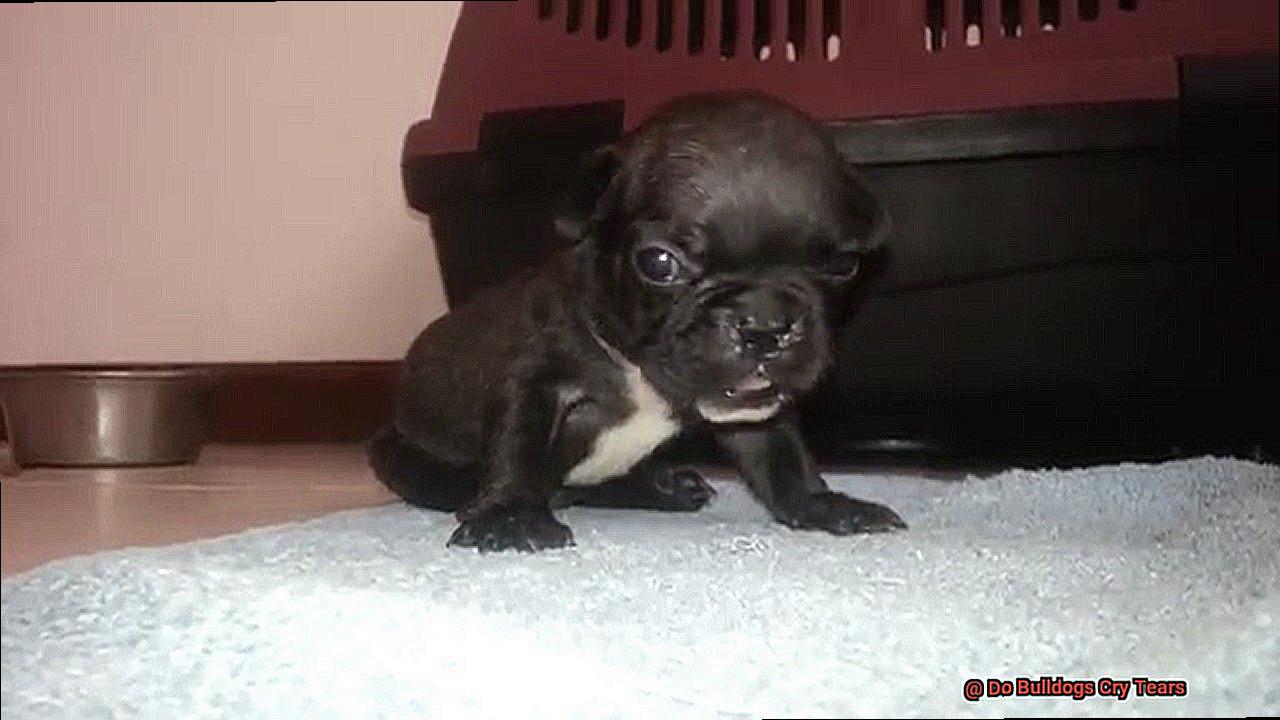
Trim Excess Hair:
Trimming the hair around your French Bulldog’s eyes can help prevent tear stains. Excess hair can block the tear ducts, causing tears to spill over and stain the fur beneath the eyes. Consult a professional groomer or veterinarian for advice on proper grooming techniques for Bulldogs.
Maintain Good Overall Health:
A healthy diet plays a vital role in preventing tear stains and eye infections. Ensure your French Bulldog’s diet is free from allergens and additives that can contribute to excessive tearing. Regular veterinary check-ups are also essential to address any underlying health issues that may be causing tearing.
Consult a Veterinarian:
If tear stains persist despite regular cleaning and grooming, it’s advisable to consult a veterinarian. They may recommend additional treatments such as topical ointments or oral supplements to reduce tear staining. A veterinarian can also check for any underlying health conditions that might be causing excessive tearing.
Specialized Products and Surgical Options to Manage Excessive Tearing
Bulldogs are adorable and lovable pets, but their unique facial structure can make them prone to excessive tearing. Those big, expressive eyes may be endearing, but they can also lead to tear stains, skin irritation, and even secondary infections if not properly managed. Thankfully, there are specialized products and surgical options available to help keep your French Bulldog’s eyes clear and healthy.
Specialized Products:
- Tear Stain Removers: These products are specifically formulated to remove tear stains from the fur around the eyes. Look for tear stain removers that contain gentle ingredients like hydrogen peroxide or boric acid, as these can help break down the pigments in the stains without causing further irritation.
- Eye Wipes: Gentle and non-irritating eye wipes are a must-have for managing excessive tearing in Bulldogs. These wipes can be used to clean the areas around the eyes and remove any debris or discharge. Choose wipes that are infused with soothing ingredients like aloe vera or chamomile to prevent further irritation.
- Tear Duct Flush Solutions: If your Bulldog’s tear ducts are blocked or congested, tear duct flush solutions can help improve tear drainage and reduce excessive tearing. These solutions usually contain sterile saline or a mild antiseptic solution and should only be used as directed by a veterinarian.
Surgical Options:
In some cases, specialized surgical options may be necessary to manage excessive tearing in Bulldogs. Two common procedures include:
- Cherry Eye Surgery: This procedure involves repositioning the prolapsed tear gland back into its normal position. It is important to consult with a veterinarian who specializes in Bulldog health to determine if this surgery is necessary.
- Entropion Surgery: Bulldogs may develop eyelid abnormalities that cause their eyelashes to rub against the cornea, leading to excessive tearing. Entropion surgery corrects these abnormalities and can provide long-term relief.
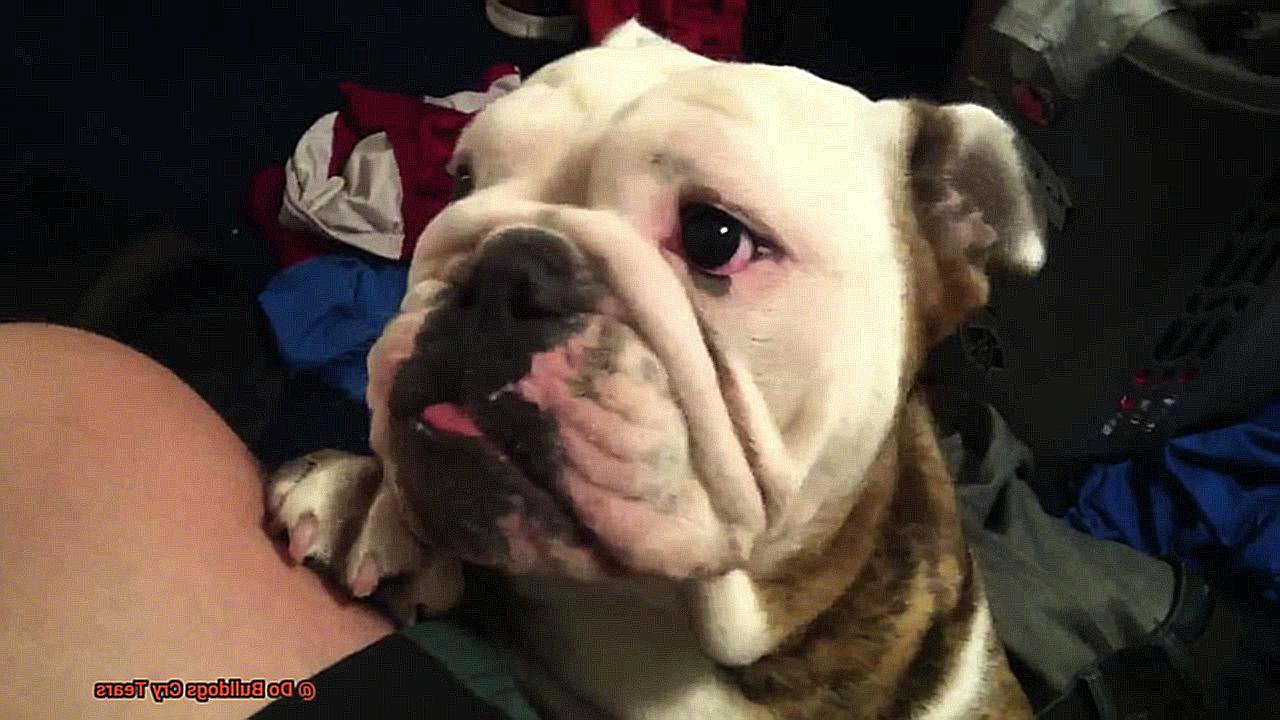
Remember, surgical options should always be considered as a last resort and after consulting with a veterinarian. They will be able to assess the severity of the condition and recommend the most appropriate course of action.
While specialized products and surgical options can help manage excessive tearing in Bulldogs, it is important to note that they may not completely eliminate the issue. Bulldogs are genetically predisposed to excessive tearing, and it is a lifelong condition that requires ongoing management and care. Regular cleaning and monitoring of the eyes, along with regular vet check-ups, are essential for maintaining the overall eye health of Bulldogs.
Potential Underlying Health Issues that Cause Excessive Tearing
French Bulldogs are beloved for their adorable features, including their large, expressive eyes. However, these same features can make them prone to certain health issues, such as excessive tearing. In this blog post, we will delve into the potential underlying health issues that can cause excessive tearing in French Bulldogs, providing you with valuable insights to help you better care for your furry friend.
Entropion: When Eyelids Roll Inward
One common culprit behind excessive tearing in French Bulldogs is a condition called entropion. This occurs when the eyelids roll inward, causing the eyelashes to rub against the cornea. The constant irritation leads to excessive tearing, discomfort, and possible eye infections.
Brachycephalic Syndrome: Breathing Troubles and Tear Flow
Due to their short, flat faces, French Bulldogs are prone to brachycephalic syndrome. This condition results in narrowed nasal passages and respiratory difficulties. As a result, excess tearing occurs as the tears help lubricate and flush out the eyes.
Eye Infections: Conjunctivitis and More
French Bulldogs are susceptible to eye infections, including conjunctivitis. Bacterial or viral infections can cause redness, swelling, and excessive tearing. Prompt treatment with antibiotics or antiviral medications is often necessary to alleviate symptoms.
Dry Eye: Insufficient Tear Production
Another potential underlying health issue causing excessive tearing is dry eye or keratoconjunctivitis sicca. This occurs when the eyes do not produce enough tears to keep them moist and lubricated. To compensate for this dryness, tear glands may go into overdrive, leading to excessive tearing.
Allergies: Irritants Triggering Tear Production
Just like humans, French Bulldogs can develop allergies that cause excessive tearing. Allergens such as pollen, dust mites, or certain foods can irritate the eyes, leading to inflammation and increased tear production.
Serious Health Issues: Glaucoma and Blocked Tear Ducts
In some cases, excessive tearing in French Bulldogs may be a symptom of more serious underlying health issues. Glaucoma, characterized by increased eye pressure, can cause pain and damage to the optic nerve. Additionally, a blocked tear duct can impede proper tear drainage, resulting in excessive tearing.
Consulting with a Veterinarian:
If your French Bulldog experiences excessive tearing, it’s essential to consult with a veterinarian. They will perform a thorough examination to determine the underlying cause and recommend appropriate treatment options, such as medications, surgery, or other interventions.
General Care Tips:
In addition to addressing the underlying health issue, there are general care tips that can help manage excessive tearing in French Bulldogs. Regularly cleaning the face and eyes, ensuring proper nutrition and hydration, and minimizing exposure to allergens or irritants can all contribute to better eye health.
How to Keep Your Bulldog’s Eyes Healthy
Bulldogs are known for their adorable wrinkled faces and big, expressive eyes. But have you ever wondered if those watery eyes mean that Bulldogs cry tears like humans do? The answer may surprise you.
Unlike humans, Bulldogs do not cry tears in the same way. While they may produce some watery discharge from their eyes, it is not an emotional response or a form of crying. So why do Bulldogs have those watery eyes?
It all comes down to their unique anatomy. Bulldogs have a facial structure with short and wrinkled skin around the eyes, which can cause tears to accumulate and overflow. This is commonly referred to as “epiphora” and can result in tear stains on the fur beneath their eyes.
The excessive tearing in Bulldogs can be caused by various factors, including allergies, eye infections, blocked tear ducts, or eyelash abnormalities. If you notice that your Bulldog’s tears seem excessive or if there are signs of discomfort or infection, it is important to seek veterinary care.
Regularly cleaning the area around your Bulldog’s eyes can help prevent tear stains and potential eye infections. Using a gentle cleanser recommended by your veterinarian and wiping the area with a soft cloth can help remove any accumulated tears and keep the skin clean.
In some cases, Bulldogs may require additional interventions to manage excessive tearing. This can include using specialized products like tear stain removers or considering surgical options such as eyelid correction surgery to improve tear drainage.
It is important to remember that excessive tearing can also be a symptom of underlying health issues. Allergies, corneal ulcers, dry eye syndrome, or entropion (a condition where the eyelids roll inward) can all cause excessive tearing. Consulting with a veterinarian is essential to determine the cause of excessive tearing and provide appropriate treatment.
So while Bulldogs may not cry tears in the emotional sense, they can experience eye-related issues that result in watery discharge. Regular eye care, monitoring for signs of discomfort, and seeking veterinary advice when necessary can help keep Bulldogs’ eyes healthy and minimize any potential problems associated with tearing.
The Importance of Consulting a Veterinarian for Eye-Related Issues
We all know just how adorable French Bulldogs are with their wrinkly faces and expressive eyes. But did you know that their unique facial structure can also make them prone to eye-related issues? That’s right. Those cute little squishy faces need extra TLC when it comes to their eyes. In this blog post, we’ll explore the importance of consulting a veterinarian for eye-related issues in Bulldogs and how you can keep those peepers in tip-top shape. So, grab a croissant and let’s dive in.
Why Bulldogs Need Veterinary Expertise
- Bulldogs, including our beloved Frenchies, are more susceptible to eye problems due to their facial structure.
- Eye issues in Bulldogs can range from dry eye and corneal ulcers to cherry eye and entropion.
- Veterinarians possess the knowledge and expertise needed to accurately diagnose and treat these conditions.
Signs of Eye Problems in Bulldogs
- Keep an eye out for signs such as redness, discharge, excessive tearing, squinting, rubbing or pawing at the eyes, cloudiness, or changes in behavior or appetite.
- Remember, prevention is key. Regular cleaning of facial folds can help prevent infections and irritation.
The Importance of Timely Veterinary Care
- Untreated eye problems can worsen and potentially lead to vision loss or other complications.
- Seeking prompt veterinary care can provide the best chance for successful treatment and management.
The Veterinary Examination
- A thorough examination by a veterinarian will assess any abnormalities, measure tear production, and evaluate overall eye health.
- Additional tests such as eye staining or cultures may be conducted if necessary.
Treatment Options
- Depending on the specific condition, treatment options may include medications, surgical procedures, or lifestyle modifications.
- Your vet will guide you on the best course of action for your furry friend.
Preventive Measures
- Your vet can recommend eyewashes or ointments for regular use and advise on proper cleaning techniques for facial folds.
- Implementing these preventive measures can go a long way in maintaining your Bulldog’s eye health.
Regular Check-ups and Peace of Mind
- Regular check-ups with a veterinarian are essential to monitor your Bulldog’s eye health and catch any potential issues early on.
- By consulting a vet, you can have peace of mind knowing that your furry friend is receiving the best care possible.
Conclusion
In conclusion, Bulldogs do not cry tears in the same way that humans do.
While they may produce watery discharge from their eyes, it is typically due to other factors such as allergies or eye infections. Bulldogs have a unique facial structure with prominent eyes and wrinkled skin, which can make them more prone to eye issues.
It’s important for Bulldog owners to monitor their pet’s eye health and seek veterinary care if any concerns arise. Remember, just because Bulldogs don’t shed tears doesn’t mean they don’t feel emotions.
These lovable dogs are known for their affectionate nature and can show their love in many other ways.
